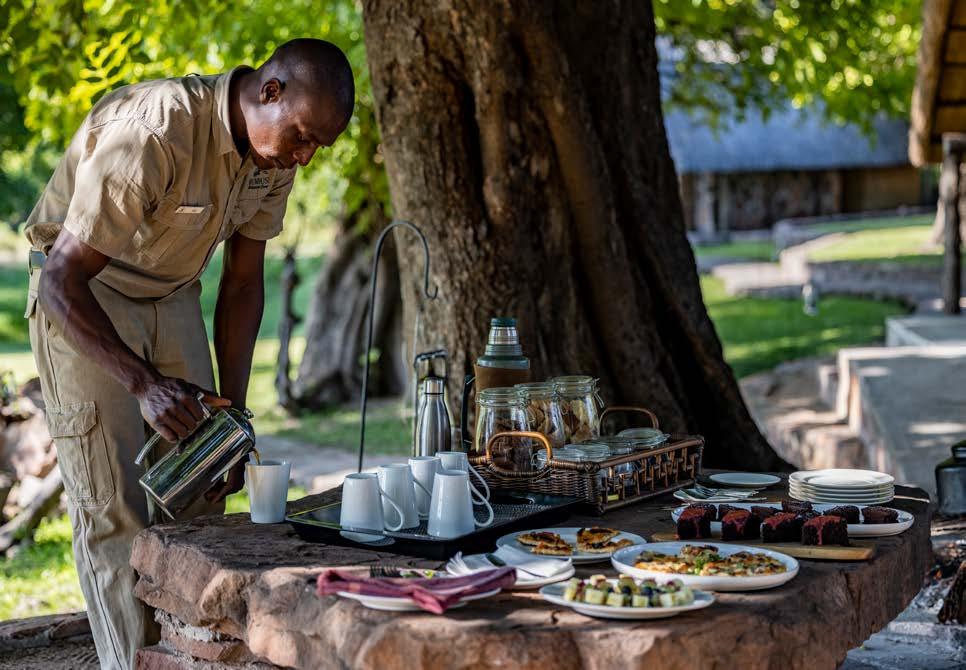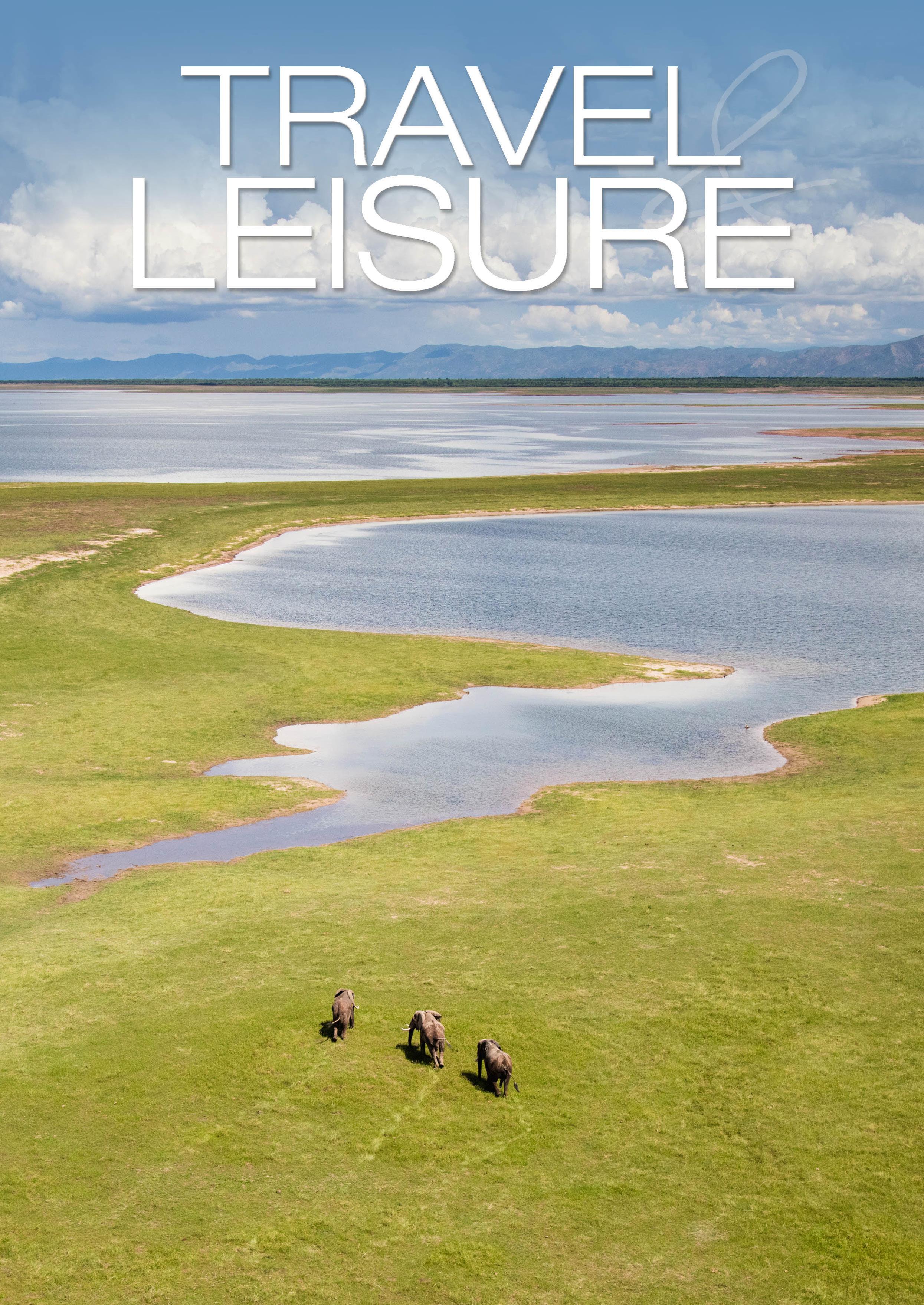

OUR 3-WEEK TRIP
ACROSS MANY OF ZIMBABWE’S MAIN TOURIST ATTRACTIONS
Writer : Sandra Jenman | Photography: Jenman African Safaris
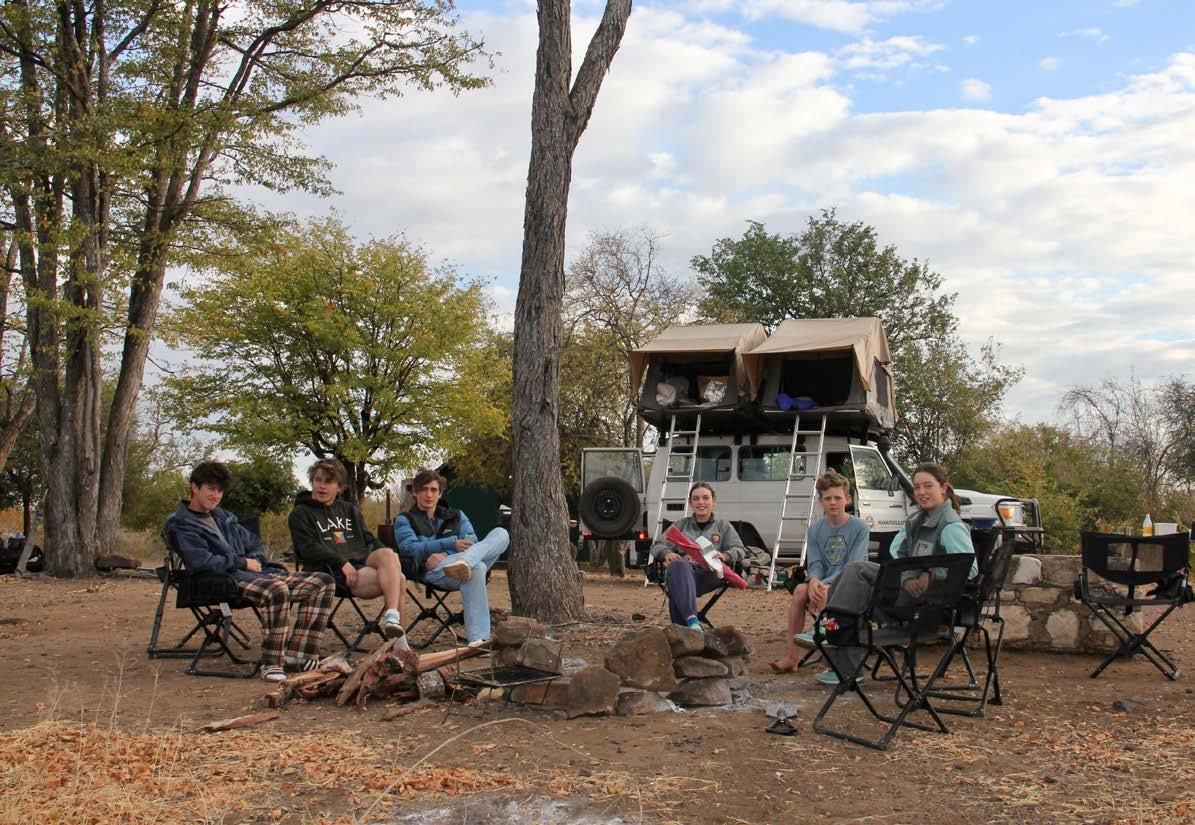
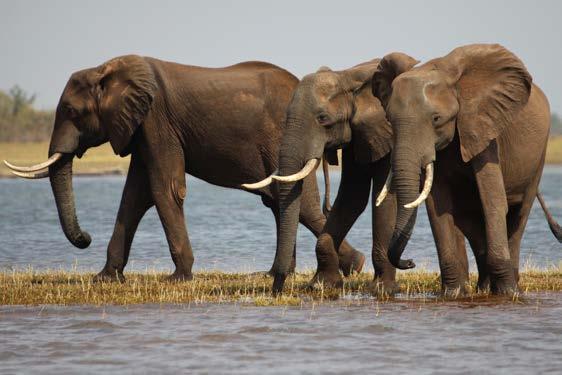
Harare
We landed in Harare and were met at the airport by Friday, our driver, who took us straight to Antony’s place in Greendale. Spending two nights at this quaint BnB, we took the time to relax and go over the route we’d be travelling for the next almost-three weeks. We knew we had quite a trip planned – the adventure for 12 of us (three families of four) had all been mapped out, and now we just wanted to get all the small details right. We set off at 5h30, driving in convoy to get ahead of Harare’s morning traffic. We took the ‘alternative’ route out of the city, rather than the main highway. This added a couple of hours to our trip but allowed us to avoid
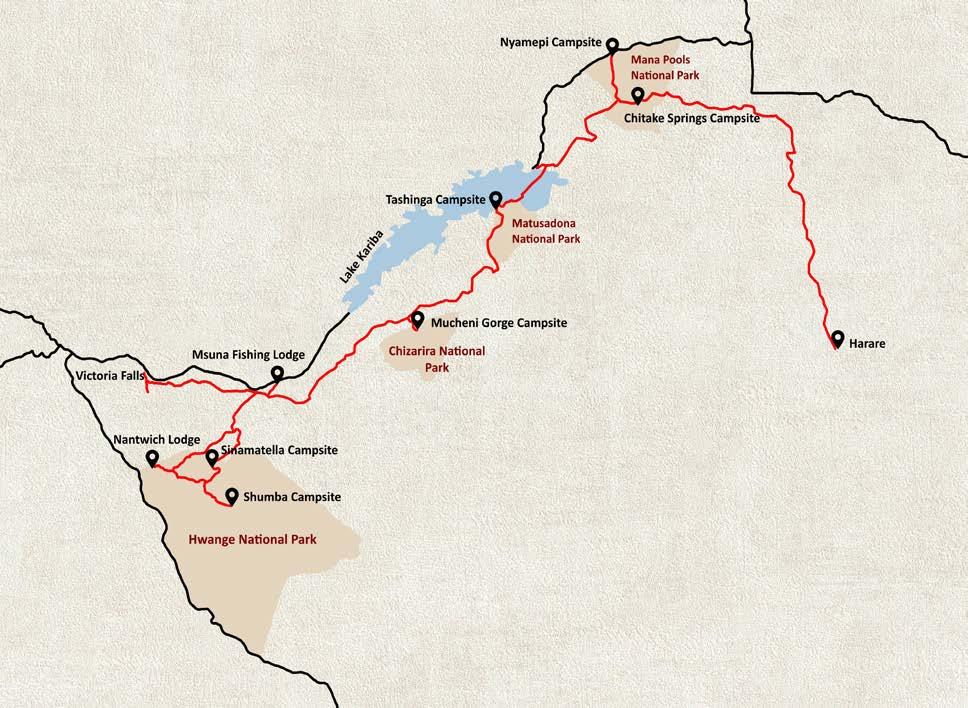
numerous potholes and the high numbers of heavy trucks moving in and out of Harare. Most of the roads were smooth, though we hit a few bumpy patches on our first day. They didn’t last long, and overall, we found this route to be scenic, peaceful, and definitely, the road-less-travelled.
We arrived at our campsite at Mana Pools just before dusk. The sunset on the water was magnificent, the glassy colours reflected between the sun and Zambian mountains across the Zambezi River’s surface. The air was pure, the stillness calming. We pitched our rooftop tents, prepared an easy braai dinner, and settled in for an evening of drinks by the fire and a night full of noises with the wildlife coming alive after dark. Hippo grunting. Impala snorting. Hyena giggling. And the distant lion’s roar.
In the morning, coffee in hand, we set out on a game drive through Mana Pools. One of the best aspects of Mana is the freedom to get out of your vehicle and walk at any time. We saw a few other tourists – probably the most we’d see anywhere along our journey – but there were few vehicles and no sense of overcrowding. We spotted several elephants, warthogs, and many types of buck.
Chitake Spring
On day three, we moved along to Chitake, setting up camp at Chitake 3. After an early fireside dinner, we witnessed one of the highlights of our entire trip: a lengthy herd of elephants, walking single file along a narrow path in the dry riverbed, silent under the full moon. Hidden behind a low bush, we watched in stunned silence as these majestic creatures followed each other, using a narrow footpath, that we checked in the morning, showing they had stepped in the leader’s exact footprints. It was an incredible experience.
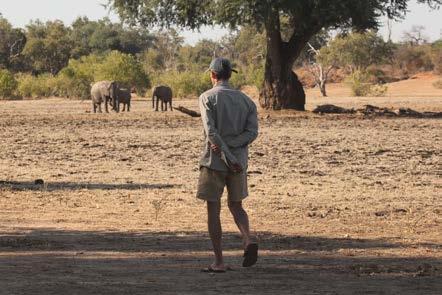
That night. as we climbed up to our sleeping quarters, we could hear the low rumbles of lions in the not-toofar-off distance. The youngest member of our group was concerned about safety in this outdoor wilderness, but sleeping atop the vehicles gives a reassuring sense of safety above any animals that might wander through the campsite below. Many of us leaned our heads out from time to time during the night, awakened by various sounds – loud squawks of guinea fowl, apparently engaging in a domestic dispute. We also saw a hyena sniffing around our campsite in search of a midnight snack.
The following morning, we visited Camp Mhara, a stunning lodge not far from the Chitake turn-off, that takes full advantage of the enchanting vista of the Chitake Valley. We were served the best banana bread alongside piping hot coffee – a welcome mid-morning treat. That afternoon we walked to a spot overlooking the mouth of the Chitake Spring, where we spotted a pride of lion, including a tiny cub, waiting for herds of buffalo to amble down the sloped embankment for water. We set up the picnic we had brought and settled down in the shade to read, play cards and chit-chat for a relaxed afternoon.
The Houseboat
On day seven, we left Chitake and drove to Kariba, where we began our three-night journey along the lake. This was the essence of a lazy, languid holiday – the chance to do absolutely nothing! Feet up, food-a-plenty, excellent service, fishing, birdwatching, reading, chatting, afternoon naps, sunbathing, swimming on board – all optional. We had complete freedom to choose how to spend our time, both individually and as a collective.
Two jetty boats were tugged behind us, perfect for either fishing or game viewing, depending on the mood of the day. With snacks and drinks on board, we floated leisurely – teenagers in one boat, adults in the other. The eyes of hippos peering just above the water observed us as we floated past, while we watched for birds and crocs. Back in time for a fabulous lunch followed by afternoon naps, briefly interrupted by music from the teenagers as they gathered at the on-board pool to take a dip!
Tashinga
After three nights on the houseboat, we returned to our vehicles and took a very short drive to our campsite in the Matusadona National Park. We chose a spot near the water, the warm sun shining and mountains in the distance, and while setting up camp, we spot elephants grazing nearby. We met a few other travellers, a South African family with young kids and a group of young adults from Switzerland.
Chizarira
Our first day here we hiked down into the gorge, hoping to spot the incredible birdlife and search for crocs in the pools below. We found a cave where baboons hang out and saw otter prints and leopard spoor in the sand, along with signs that elephants had recently trapsed down the sloping paths to the water. Following the trail of dung down the narrow path and up again on the opposite incline, we wondered how these massive giants could slip through the trees without creating a wider path, as most of the trees remained unharmed. At the bottom, we stopped for a picnic and a dip in the gorge’s clearest pool – first ensuring there were no crocs in sight before taking our swim.
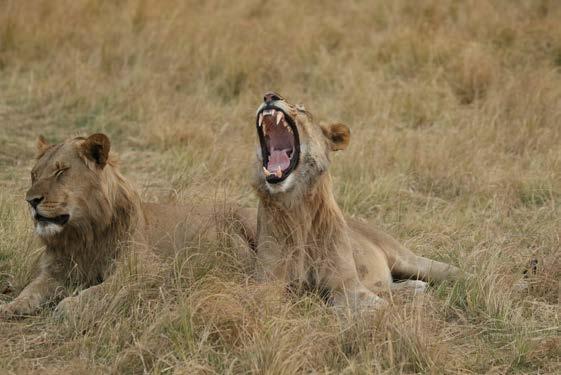
Next, was the long drive through Matusadona. The hills were green, and the air grew cooler as we drove through mountainous areas. Along the way, we passed a few elephants, and tiny klipspringers. We had anticipated rough terrain, and the roads past the top villages didn’t dissapoint! Navigating rocks, pits, and sandy crevices made for a nice challenge for the experienced drivers! We stopped a few times along the way to chat to locals and take in the views.
Sinamatella – Hwange
From the campsite, we had beautiful views of the plains below – this was one of our most isolated and serene spots on our journey. Nearby was the Masuma Dam, where we saw an incredible number of elephants as well as some lions in the distance. As we left, the road towards Shumba took us past several pans and spots where we saw crocs, terrapin, a snake, white heron and saddle-billed stork, hammerkop and plover. We arrived at Mafa’s Pan to find eight elephants drinking: two brothers seemingly sparring, or playfighting, while the rest drank in solitude – mid-day, no one else around, just us and them. Another satisfying moment in the African bush.
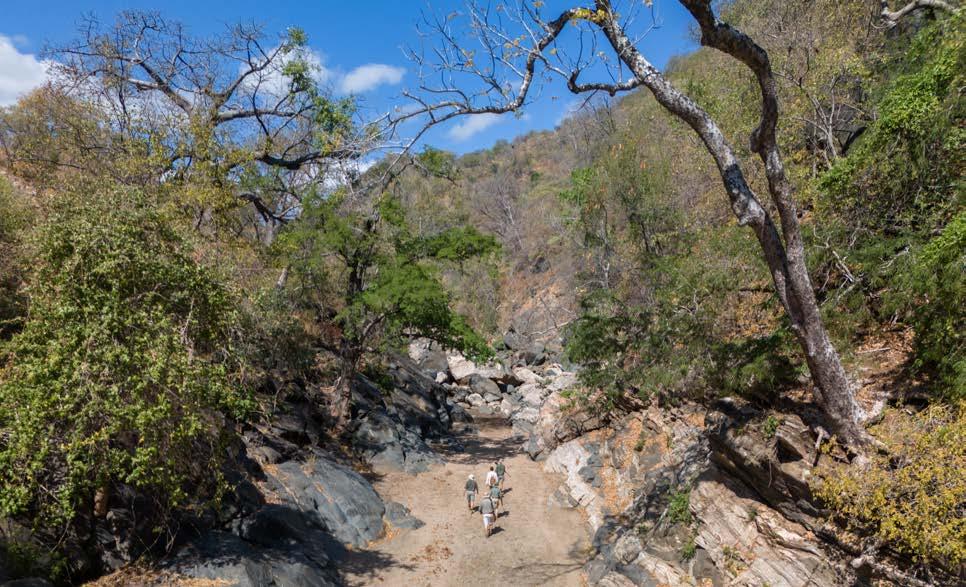
Shumba – Hwange
Our last night camping was at Shumba – a tidy site with hot running water and flushing toilets, and tables (which had been lacking at two of our previous sites). Two staff members fired up the donkey and brought us firewood on our arrival. That evening, we arranged our chairs around the biggest bonfire we’d had yet, enjoying the clear night and gentle breeze. After an evening of banter and the best braai dinner, elephants came to munch trees a mere 20 meters from our campsite. Perhaps they were coming to say hello. We sat quietly, watching, waiting for them to move off, slowly, silently. We then slept under the fullest starry sky I’d ever seen.
The lodges –Nantwich, Bumbusi, and Msuna River Lodge
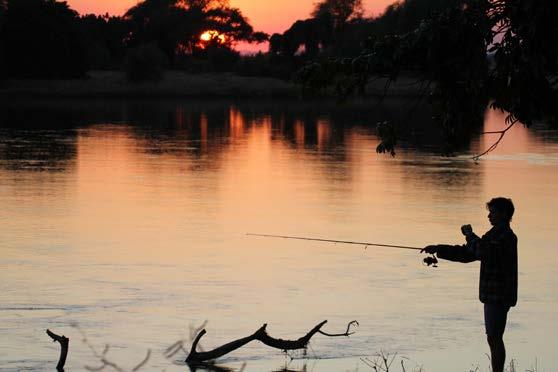
Our camping experience had ended, and we settled into a new routine that felt like pure luxury, indulging in exceptional food, service, and the comfort of real beds instead of sleeping bags! At Nantwich, Nyellie, the manager, and the rest of the staff created a warm atmosphere , heartwarming and unique – in true Zimbabwe-style. We spotted a hanging leopard kill, some lion in the distance, several species of buck, including impala, kudu, reedbuck, roan, tsessebe, waterbuck and
sable, as well as honey badgers, a pair of jackals, warthogs, and a herd of over a thousand buffalo – it was spectacular. Bumbusi, our second lodge, was a veritable picnic oasis, after driving through dusty, outback territory and dry riverbeds, we welcomed the large trees and green lawns of camp. A beautiful lunch near the pool and chalets was waiting, after which, we joined Blessed, the manager, on a walk through the archaeological ruins of the Nambya people. The views are out of this world.
Our last stop on our epic journey is Msuna River Lodge, where we met Dean and Sonya, the managers. They gave us a tour of the property and took us on a boat trip to try some fishing (no guarantees during off-season, but from September to December, this part of the Zambezi is teeming with bream and tilapia).
The views, food, amenities, and service at Msuna were all excellent. It was hard to leave and fly home to a chilly Cape Town, but our memories of this fabulous trip will last a lifetime.
Jenman Africa Safaris
Contact: info@jenmansafaris.com
Website: www.jenmansafaris.com
